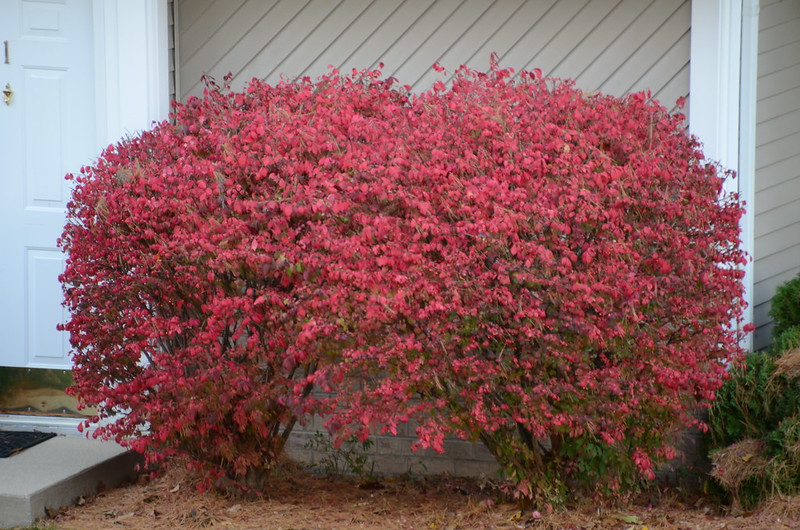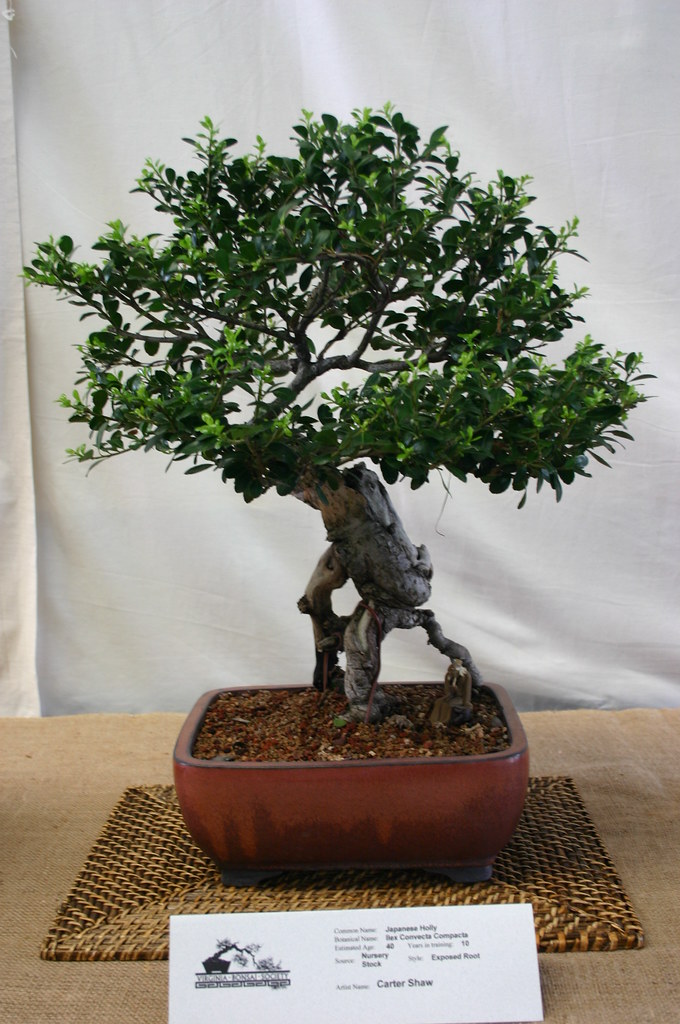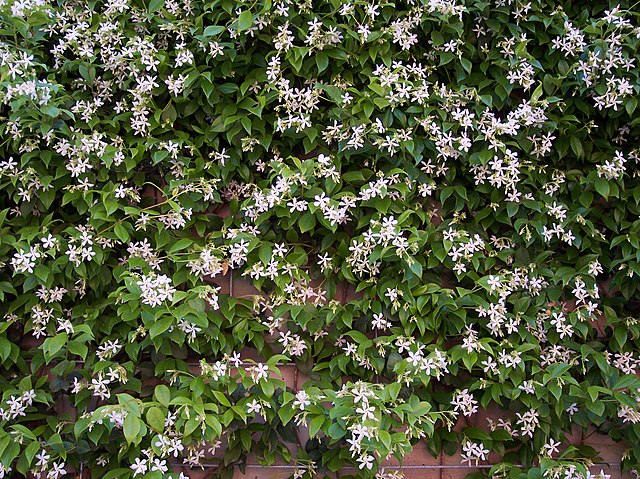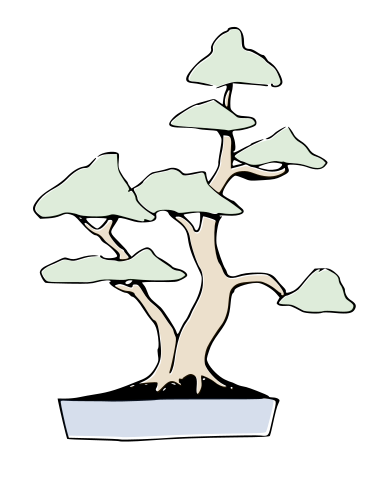Getting Started
Note: this is an abridged version of a longer chapter in our book, “Growing and Styling Bonsai in Piedmont NC”
During club demos we often meet people who want to try bonsai but are hesitant about starting. These reasons come up time and again.
- They tried it once but the tree died.
- There are too many rules.
- It requires expensive special tools.
- Bonsai requires special imported, expensive, hard to find trees.
- It takes too long.
- There is no “kit” or “plan” they can use to try it out.
If you are a new practitioner or just want to try out bonsai, here are some ways to make getting started easier.
Remember It’s Supposed to Be Fun
Bonsai styling rules help us create the illusions of depth, size, and greater age, but they can scare off novices. When you are starting out, focus on creating a tree that you like. If your tree is healthy and evokes a feeling or memory of nature for you, then it is a success.
Also keep in mind that we learn other creative activities like drawing or music by following rules and instructions first, then experimenting later. In bonsai we have to work with live, unpredictable materials from the start. Even the most basic rules about branch placement may need to be ignored in order to create a visually pleasing tree that tells a story.
In short, don’t get wrapped up in all of the formal rules until you are ready for them.
Limit Your Initial Investment
Many practitioners use specialized tools because they make short work of tasks we do routinely, and last for decades. They are not essential though.
 A set of bonsai tools, from left to right: leaf trimmer; rake with
spatula; root hook; coir brush; concave cutter; knob cutter; wire
cutter; shears (3 sizes). While these tools make many tasks easier, they
are comparatively expensive. This basic set retails for $100-400
depending on the quality of the steel in the tools. Link to
original image.
A set of bonsai tools, from left to right: leaf trimmer; rake with
spatula; root hook; coir brush; concave cutter; knob cutter; wire
cutter; shears (3 sizes). While these tools make many tasks easier, they
are comparatively expensive. This basic set retails for $100-400
depending on the quality of the steel in the tools. Link to
original image.
With a bit of scrounging through Dollar Store, Harbor Freight, or hardware store discount bins you can put together a full set of tools for less than $40. You can move up to dedicated tools once you gain some experience.
A basic toolset will have:
| Tool | Purpose or Function |
|---|---|
| Bypass pruner | Cutting branches; usually your most expensive item |
| Fine scissors | Clipping leaves & new shoots |
| Short, heavy scissors | Clipping soft green branches & small roots |
| Angled wire cutter | Cutting wire, pruning branch stubs close to trunk |
| Needle-nose pliers | Twisting wire, heavier grasping and pulling |
| Medium (8-10”) forceps | Pull wires through tight spaces, reach into root ball or crown |
| 2-3 pencils or 12” dowels | Use a sharpened one to probe tight spaces; use unsharpened ones to probe pots, tuck soil between roots |
| Roll of masking tape | Making pads for guy wires, making temporary barriers to hold soil |
| Small bottle of yellow carpenter’s glue | sealing wounds and pruning cuts |
| Kitchen or packaging twine | Tying down branches; cotton works best |
| Package of 12- or 14-gauge single-strand wire | Heavy wire to anchor trees in pots, bend large branches |
| Package of 16- or 18-gauge single-strand wire | Medium wire for shaping most branches. Either insulated or uninsulated works |
| Package of 22-gauge single-strand wire | Guy wires, fine branch wiring |
| Toothbrush or small plastic bristle brush | Scrubbing dirt from roots, branches, tools |
Three sizes of wire are listed, but you can skip the heavy 12/14-gauge wire, and use two pieces of smaller diameter wire. Often you can scrounge sufficient copper or aluminum wire scraps from construction site trash or from electrical installations. Strip off the insulation or toss the wire in a bonfire to burn it off.
Start With Less Expensive, More Forgiving Species
It is tempting to buy a nice pre-bonsai and try to finish it. That is not a good idea. Trees WILL die when you first start out in bonsai; it is part of the learning process. If you limit yourself to inexpensive nursery stock, you are less likely to get frustrated and quit.
Look at it another way: a nicer pre-bonsai from a specialty grower will cost $100-200 (possibly more). You may hesitate to work on styling as aggressively because you paid so much for it. For that same investment you can purchase 4-6 good starter stock trees from the landscaping department of a home improvement store. Even if 3-4 of those trees die, you still have 1-2 trees left, AND you have learned more about styling and care than you would from just one tree.
Your first trees should be species that tolerate novice errors. Several species that are recommended for novices by others are poor choices here in NC. For example, dwarf junipers (Juniperus procumbens ‘Nana’) are popular starter trees, but they tend to be more frustrating than enjoyable because they do not tolerate being over- or under-watered, and do not tolerate pruning errors well.
These species work well for first-timers here in central NC. They tolerate common mistakes, are widely available, and are not expensive.
Shore juniper (Juniperus conferta ‘Blue Pacific’)
Some experts consider this a cultivar of J. rigida (temple juniper). It has a low spreading shape like J. procumbens ‘Nana’ but is more heat tolerant and pest-resistant.
Shore juniper’s needles are softer so the foliage is easier to handle, and they have long sinuous branches that can be wired easily to create dramatic shapes. Most landscape stock will have one longer branch than can be wired upright into a leader with the rest of the soft branches drooping to the ground like a hemlock. One downside is that this species resents being pruned, so cuts should be made infrequently. Tips are best groomed by pinch-pruning rather than cutting. It definitely needs well-drained soil.
1. 
2. 
Shore juniper. 1. A yellow cultivar. 2. A mat of recumbent foliage. Link to original images: image 1; image 2.
Boxwood (Buxus sempervirens)
Common boxwoods are evergreen but are not in the conifer group. They are available nearly everywhere. The big challenge is finding a starter tree that has one larger trunk with some surface roots rather than multiple small shoots. Beyond that, boxwoods tolerate root and branch pruning extremely well, have a naturally fibrous root system, back-bud nicely, and are not fussy about conditions. Branches are brittle after the green stems become woody, but they still can be wired with care.
Chinese elm (Ulmus parvifolia)
Bonsai enthusiasts love the tiny leaves of super-dwarf cultivars like ‘Nire-keyaki’ and ‘Yatsubusa’. These dwarf cultivars are fussy about growing conditions so are not appropriate for novices, but non-dwarf elms are great choices. They still have small leaves, grow quickly, and are widely available. Many nurseries and home centers carry landscaping sized trees that can be cut back and rebuilt in 1-2 years. They grow readily from seed. Chinese elms adapt to a variety of soil mixes, they tolerate radical pruning very well, and they will thrive even when their roots are crowded in the pot or ground.
3. 
4. 
Boxwood (3) and Chinese elm (4). Link to original images: image 3; image 4.
Butterfly bush (Buddleia sp.)
The one challenge of butterfly bush is that it does not like small containers. When overpotted thought a butterfly bush will put on several flushes of growth that provide regular opportunities to practice pruning. Many colors are available. Novices can buy 5-10 attractive small bushes for the price of a single (often poorly) grafted Japanese maple.
Burning bush (Euonymus atropurpureus)
They are widely used landscaping shrubs that require minimal care. Many people do not realize these are native to Midwest North America, from Ontario to Texas. They are slower growing than some of my other recommendations, but provide year-round interest with flowers, fruit, and brilliant fall color.
5. 
6.

Butterfly bush (5) and Euonymus (6). Link to original images: image 5; image 6.
Japanese holly (Ilex crenata)
Not an especially attractive shrub and a bit brittle but it tolerates pruning very well. Shrubs with large bases are reasonably inexpensive. In my experience potted specimens prefer semi-shade here in NC to keep the roots cool.
Nandina (Nandina domestica)
This shrub is in the barberry family. Many people dislike nandina because it is invasive, but that means there are a LOT of shrubs available to dig out for free. In pots, it develops airy foliage pads like sparse Japanese maples or bamboos. Nandina is nearly indestructible; cut it to the ground, and the stump will resprout quickly, so any pruning and styling mistakes can be cut out completely.
7. 
8.
Japanese holly (7) and nandina (8). Link to original images: image 7; image 8.
Confederate jasmine (Trachelospermum jasminoides)
A fast-growing vine that can reach 25 feet and bears sweet-smelling white flowers all summer. It adapts well to life in a pot, but needs good loam soil, partial shade, and consistent moisture. A strong woody base forms in just one year, and regular side shoots provide plenty of material for pruning and shaping practice. This species has no problem being cut back regularly, so is good for learning how to build trunk and branch taper.
9. 
10. 
9. Confederate jasmine growing on a wall. 10. a cascade bonsai made from the Asian jasmine, a related species. Link to original images: image 9; image 10.
Use Shortcuts to Make Styling Easier
These are some ways to modify standard styling practices so they are less intimidating for novices.
- Over-pot trees. Small pots restrict growth and dry out quickly. When a small tree is overpotted in an attractive container it is less likely to dry out, and will recover more quickly from pruning and watering mistakes.
- Use cotton twine to pull down branches instead of wire. Twine is soft enough to form its own pad around limbs. An open loop tied around a branch is unlikely to girdle a branch before it rots through.
- Use less traditional styles that achieve a dramatic look quickly. Raft styles are very easy to create (especially in deeper containers), as are clump, multi-trunk and forest styles.
Styles that are easier to develop more quickly. 11, 12: raft style. 13, 14: forest style. 15, 16: multi-trunk style. Links to original images: 11; 12; 13; 14; 15; 16.
Shorten Your Time to a Final Product
Long-term practitioners see trees as ever-changing puzzles to be solved. Slowly, patiently building new branches and foliage pads is part of the fun. When first starting, waiting even a month is hard, let alone a year. Don’t use clip-and-grow techniques. Build your tree out of the currently existing branches and foliage.
Pay Attention to Aftercare
Make sure you know how to care for each tree you have. Write out a “care card” for each tree you create. Include:
- How to gauge when soil is too dry, too wet, or just right.
- How much light the particular species likes.
- When and how much fertilizer to give the tree.
- Signs that it is time to repot the tree, and when to do it.
- Early warning signs of problems:
- Discolored foliage
- Wilted leaves even after watering
- Early leaf drop (deciduous trees) and browning needles (conifers)
- Where, how to protect the tree during cold weather.
Remember, nearly all bonsai belong outside. Even tropicals prefer being outdoors for our hot, humid summers.

Except where noted otherwise, this work is licensed under a Creative Commons Attribution-NonCommercial-ShareAlike 4.0 International License.






